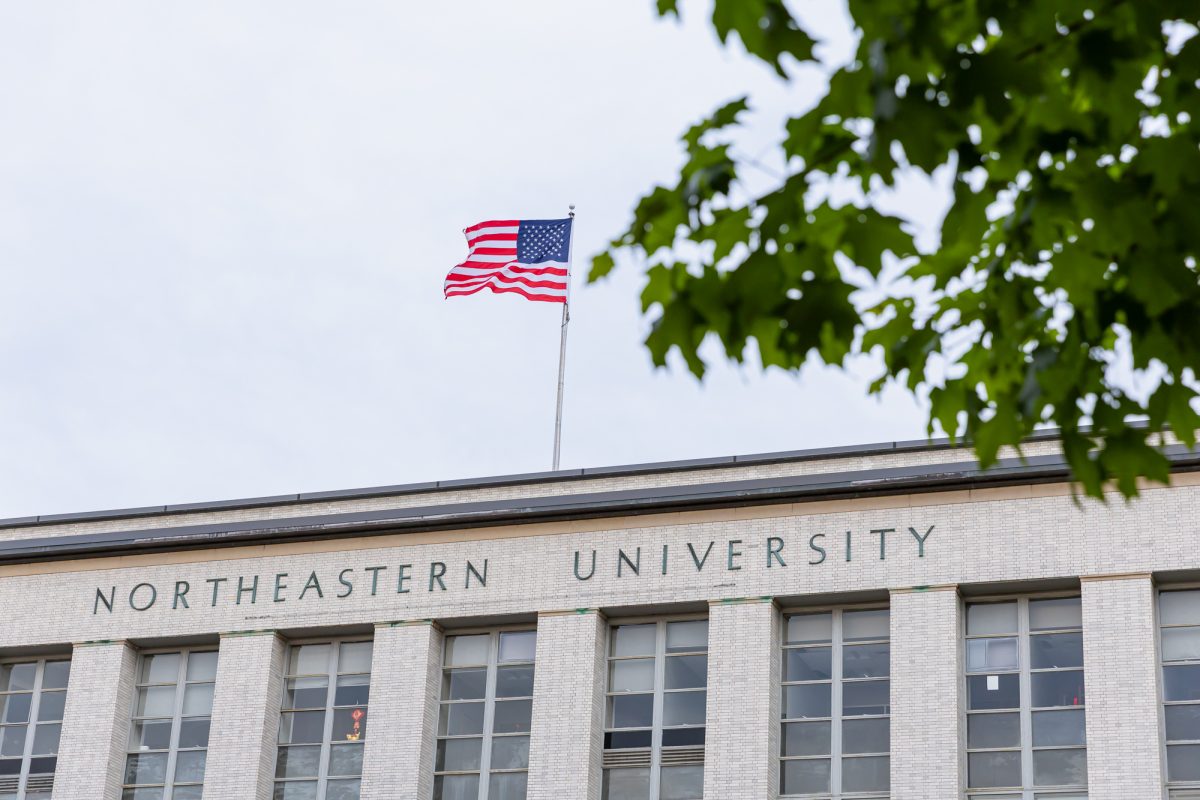
While officials were scrambling to identify the black panels that caused last week’s bomb scare, Christopher Budnick was collecting one as a souvenir.
Budnick, a middler English major, is a friend of a friend of Peter Berdovsky, one of the artists charged with placing the panels. When he heard about the scare, he logged on to Berdovsky’s website and looked up the locations of the other panels.
“I saw that there was one maybe two blocks away from me,” said Budnick, who retrieved the panel from a Hess gas station sign on Commonwealth Avenue.
“I got there before the police did,” he said. “It really shows that homeland security is woefully inadequate.”
The panels, which have been compared to Lite-Brites, depicted a glowing creature – a Mooninite – giving the middle finger. They are now widely known to have been an advertising campaign for the Adult Swim program on Cartoon Network, “Aqua Teen Hunger Force,” and were placed in public places around Boston and several other cities, like New York and Seattle, two to three weeks ago.
Budnick is a fan of “Aqua Teen Hunger Force,” but said that’s not why he took the panel, which portrays the Mooninite Ignignokt.
“I figured that with how they were being destroyed, it was an important artifact,” he said. “I had an idea that it might be very valuable.”
That idea proved correct, and although Budnick declined to give specifics until the sale is final, he said he has a buyer willing to pay between $2,000 and $20,000. He originally put the panel up for sale on eBay, but it was taken down. After prodding eBay for an explanation, Budnick said he was told the auction was “encouraging illegal activity.” He is now in the process of selling the panel independently through a website.
Budnick said he will split the money with a friend who helped him retrieve the Mooninite, but his share of the money will mostly go toward promoting public art like last Wednesday’s now-infamous ad campaign – or if necessary, to help fund the legal defense for Berdovsky and his fellow artist Sean Stevens.
“If the state of Massachusetts is silly enough to prosecute them, the money will just go to their defense,” he said.
Berdovsky and Stevens became instant celebrities last week after they were arrested for their involvement in the scare, then held a press conference during which they spoke only about ’70s haircuts. Budnick applauded the conference as an appropriate response to the situation.
“I thought they were treating the case as absurdly as it is,” he said. “The only way you can get the media to treat it absurdly is to only interact with them absurdly.”
Whatever happens to Berdovsky and Stevens, Budnick said he will sell the panel, although a part of him would like to decorate his Allston apartment with Ignignokt.
“I really wanted to keep this more than anything else because it’s such a cool thing to have,” he said. “But I figured I can either keep it and have it in my room not doing much, or I can create a lot of public art.”
This isn’t Budnick’s first brush with art in the public domain. He is involved with Antenna Alliance, a group that works with campus radio stations at Northeastern and Harvard to record local music for free. They release the music with a liberal copyright, which allows for remixes and other kinds of sharing.
With the money from the sale of the Mooninite, he said he would like to establish small grants for students to create public art, which he described as art hung publicly, and sometimes illegally, in places art wouldn’t necessarily be expected.
Budnick criticized Boston’s response to the scare, and specifically Massachusetts’ hoax device law, which defines a hoax by its effect, not its intent. This means even if Turner Broadcasting Corp., the parent company behind last week’s chaos, did not intend for the devices to be a hoax, the law defines a hoax device as “any device that would cause a person reasonably to believe that such device is … for endangering life or doing unusual damage to property.”
Budnick called on artists to defy the hoax law, and related it to the ’70s hair press conference, specifically afros.
“It’s almost completely sardonic. The afro came out of a subversive community that no longer wanted to straighten their hair with lye,” he said. “They rebelled, just in the same way that artists are rebelling against the hoax device law, which is perhaps the silliest part of all this.”








